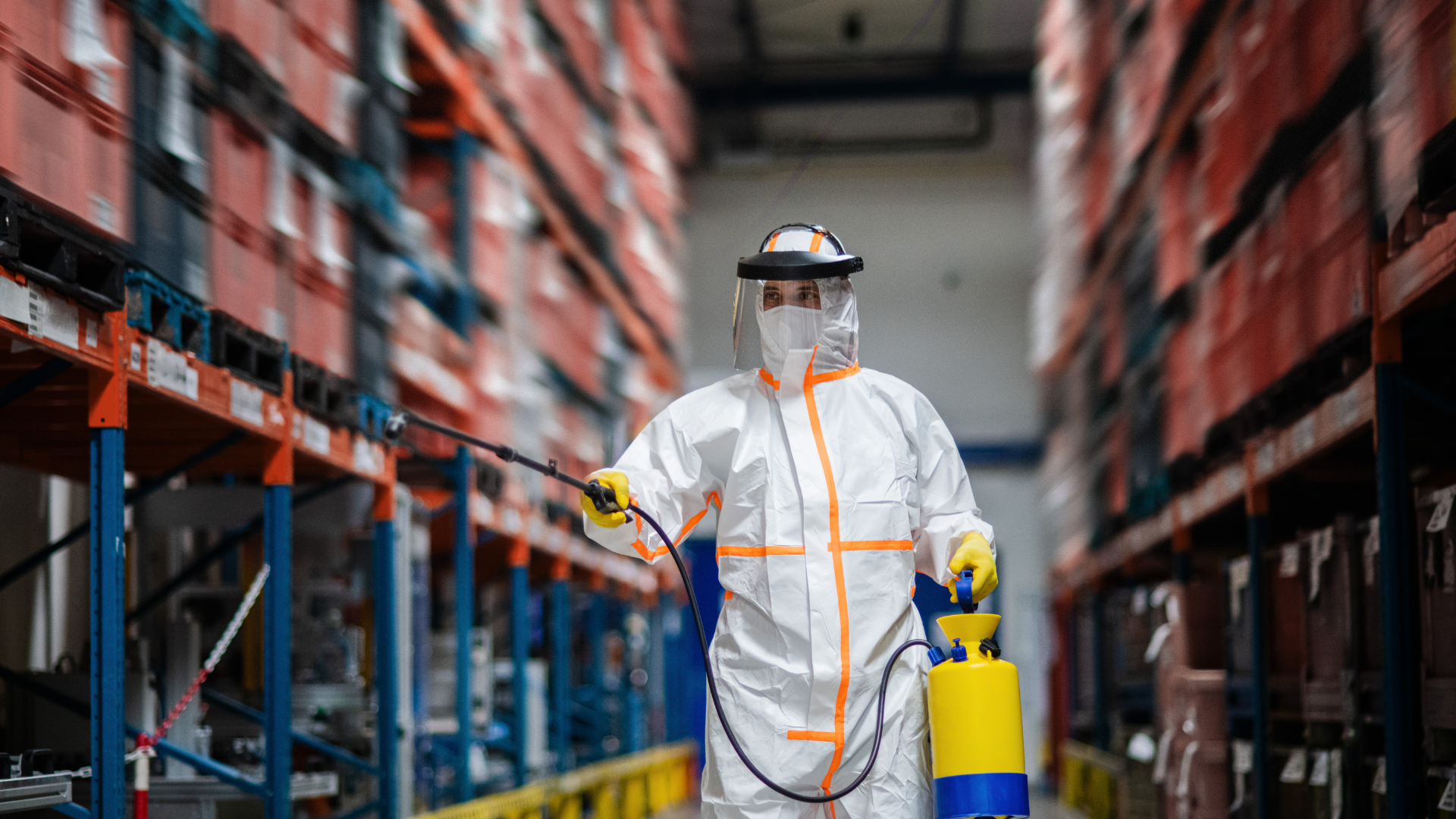In any company where there are employees, the presence of the work safety sector is necessary.
As every organization depends on hard work, having good and capable professionals is essential to the health and success of the business.
In this article you will understand a little more about what work safety is and its importance in organizations.
>>Read also: EN – work permit
What is Job Security?
We can define work safety as the adoption of a set of rules, norms, actions and measures that aim to identify, reduce and prevent risks to the health and integrity of employees. This includes occupational illnesses and accidents at work.
When we talk about work safety, the first subject that comes to mind is the use of PPE and EPCs, which are individual and collective protection equipment, and which are in fact extremely important, but the area of activity of safety professionals of work is not limited to just applications of these equipment.
The occupational safety sector participates in several actions, such as:
- Study of the work environment;
- Analysis of causes of accidents in the work environment;
- Lectures and training;
- Results assessment;
- Implementation, correction and adjustment of security methods;
- Activities related to occupational medicine;
- Medical exams;
- Employee psychological assessment;
- Vaccination of employees according to the risks of the function;
- Study and analysis of work safety legislation, technical standards and responsibilities in relation to safety.
These are just a few directions that the sector may need to take in a company, therefore, limiting the work of these professionals to PPE and EPC applications is a mistake.
This sector ranges from the slightest risks to commitment to the well-being and integrity of employees.
Which professionals make up the work safety team?
The occupational safety sector has professionals such as: occupational physicians, occupational safety engineers, nurses and occupational safety nursing assistants.
This group of professionals is called SESMT – Specialized Service in Safety Engineering and Occupational Medicine.
We also have the CIPA – Internal Commission for Accident Prevention, made up of company employees. The purpose of CIPA, as its name implies, is to prevent accidents and illnesses resulting from work, aiming at quality of life in the work environment.
Several Regulatory Norms cover work safety, more precisely 37, all governed by Ordinance No. 3,214/1978 of the Ministry of Labor.
Companies also have the option of outsourcing this work. In this sense, many tend to outsource it by hiring a team or company specialized in this area, dispensing with the need to maintain a fixed sector exclusively for this function.
In this case, third-party management is extremely important to maintain control of such a fundamental area.
>> Read also: PPE and EPC: Differences and Importance
Importance of job security
The main objective of Occupational Safety is to identify, assess and control risk situations for the physical integrity of employees in the most diverse work areas. Thus, in order to achieve this objective, it is necessary to develop norms, procedures and security measures.
Workplace safety, however, does not only aim at this objective, it also objectifies safety so that the team remains motivated to carry out its work, worrying about the physical and mental health and well-being of workers.
And it is clear that for the company this sector is essential, not only because it is right, but also because keeping them safe is an investment, as by reducing accidents, fines, indemnities and medical treatment of occupational illnesses or injuries are avoided, reducing , thus, delays in processes and financial losses.
In addition, these professionals are the ones who bring results to the company.
It is also worth remembering that occupational safety is not an option, since the safety standards proposed by the Ministry of Labor are mandatory for every company.
Workplace Safety and Bird's Triangle
Bird's Pyramid/Triangle is a concept addressed in work safety that was developed by Frank Bird Jr., where he lists episodes of near misses, property damage, incidents and accidents.
After studying more than 1.5 million accidents reported by 297 companies in more than 21 different types of industries, Bird proposed the famous relationship 1-10-30-600.
The pyramid is divided into four levels. The base represents 600 near misses, the third tier represents 30 property damage, the second tier refers to 10 serious injuries, and the top of the pyramid is 1 serious or fatal accident.
This proportion reads as follows:
- 1:10 – for every serious accident, there are ten minor accidents;
- 1:10:30 – for one serious accident, ten minor accidents and thirty accidents with property damage;
- 1:10:30:600 – for one serious accident, ten minor accidents, thirty accidents with property damage and six hundred near misses.
Looking from a statistical point of view, this logic suggests that the more near misses there are, the greater the probability that a serious accident will happen.
This suggestion of cause and effect was based on studies carried out by Bird and is sometimes adopted as a methodology in the area of work safety, however, its effects may vary depending on the segment and size of the company, so it is always feasible to adapt to the reality of the working environment in question.
Dupont's Pyramid
Now, converging with this study, an updated version of Bird's pyramid was recently created by the company Dupont, which is known for its focus on preventing accidents at work.
The updated version adds information to the pyramid, with a new base, behavioral deviations. Above them are near misses, minor accidents, serious accidents, and at the top, fatal accidents.
The proportion in this update is given as follows:
- 1:30 – for every one fatal accident, there are 30 serious accidents;
- 1:30:300 – for every one fatal accident, 30 serious accidents and 300 minor accidents;
- 1:30:300:3.000 – for one fatal accident, 30 serious accidents, 300 minor accidents and 3000 near misses;
- 1:30:300:3.000:30.000 – for one fatal accident, 30 serious accidents, 300 minor accidents, 3000 near accidents and 30,000 behavioral deviations.
Companies have used this update as a basis, as it is closer to the reality they live today. Since it maintains the same idea of cause and effect as the first version, but more assertively.
Today we know that accidents at work usually derive from some human error, that is, behavioral deviations.
These being the most frequent, they are the ones that need the most attention, by controlling them it is possible to reduce the rest of the pyramid.
And just like the first one, this pyramid can be adopted as a methodology and be of great value.
>> Read also: What is the relationship between PPE, EPC and Risk Hierarchy?
Conclusion
Safety at work is an indispensable sector. Whether fixed or outsourced, the important thing is that standard procedures are followed!
It encompasses much more than just the use of PPE and needs to be given the attention it deserves, as a job well done in this sector can save lives.
Now that you know better about this topic and about the obligation and seriousness it carries, be responsible to cooperate with its success in your company and take the opportunity to share this subject with people who also like the topic!
To receive more content like this follow our blog and our other social networks!

















